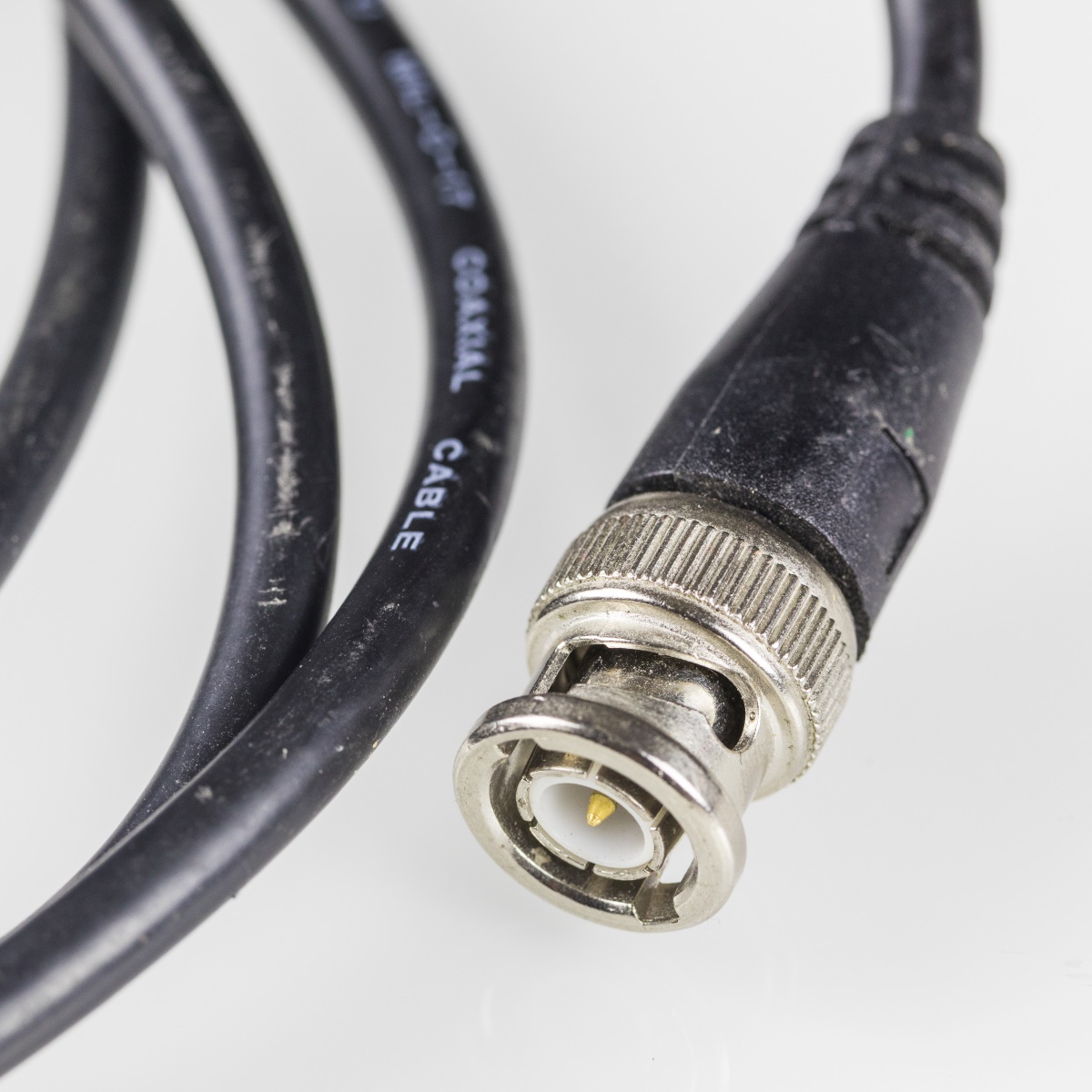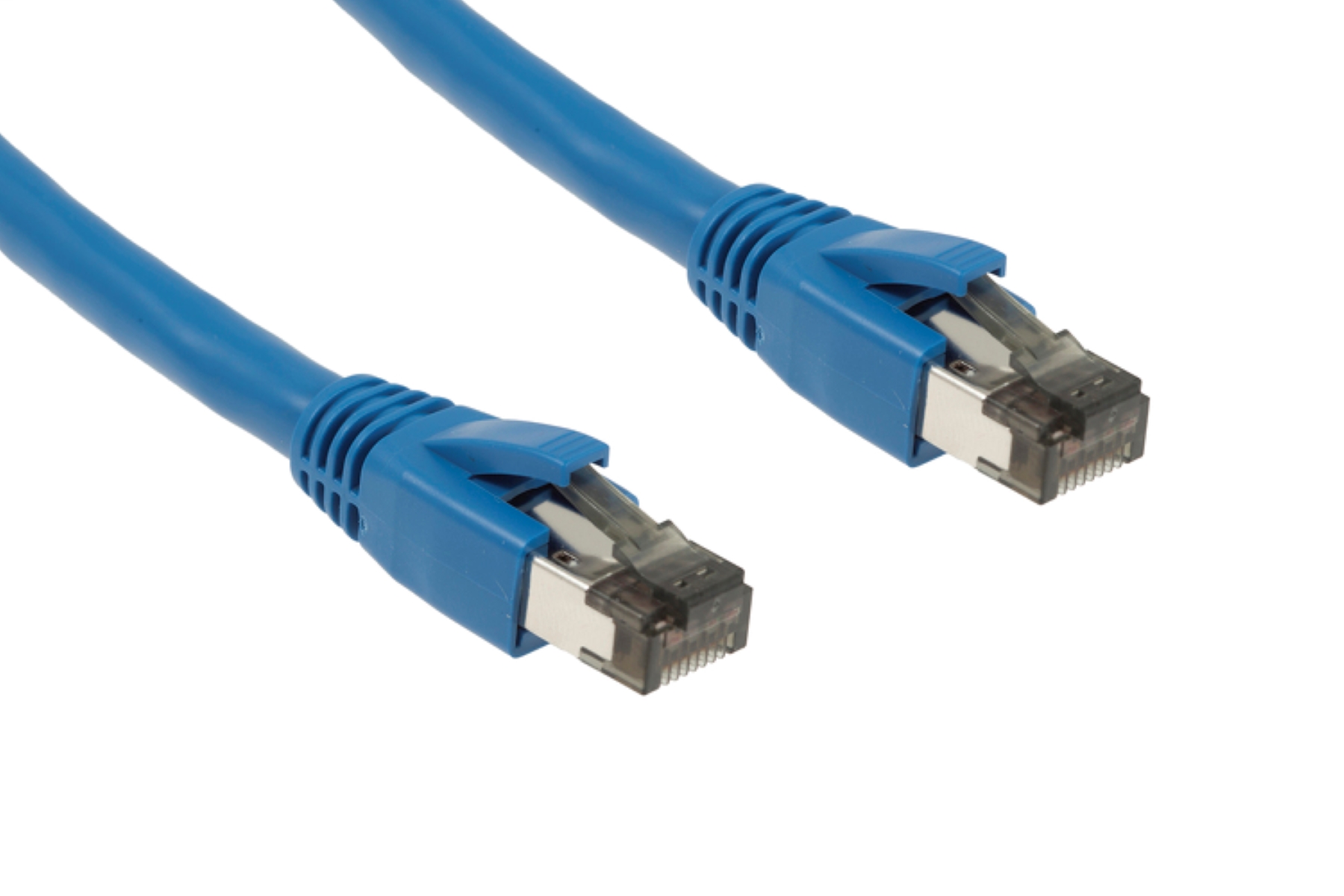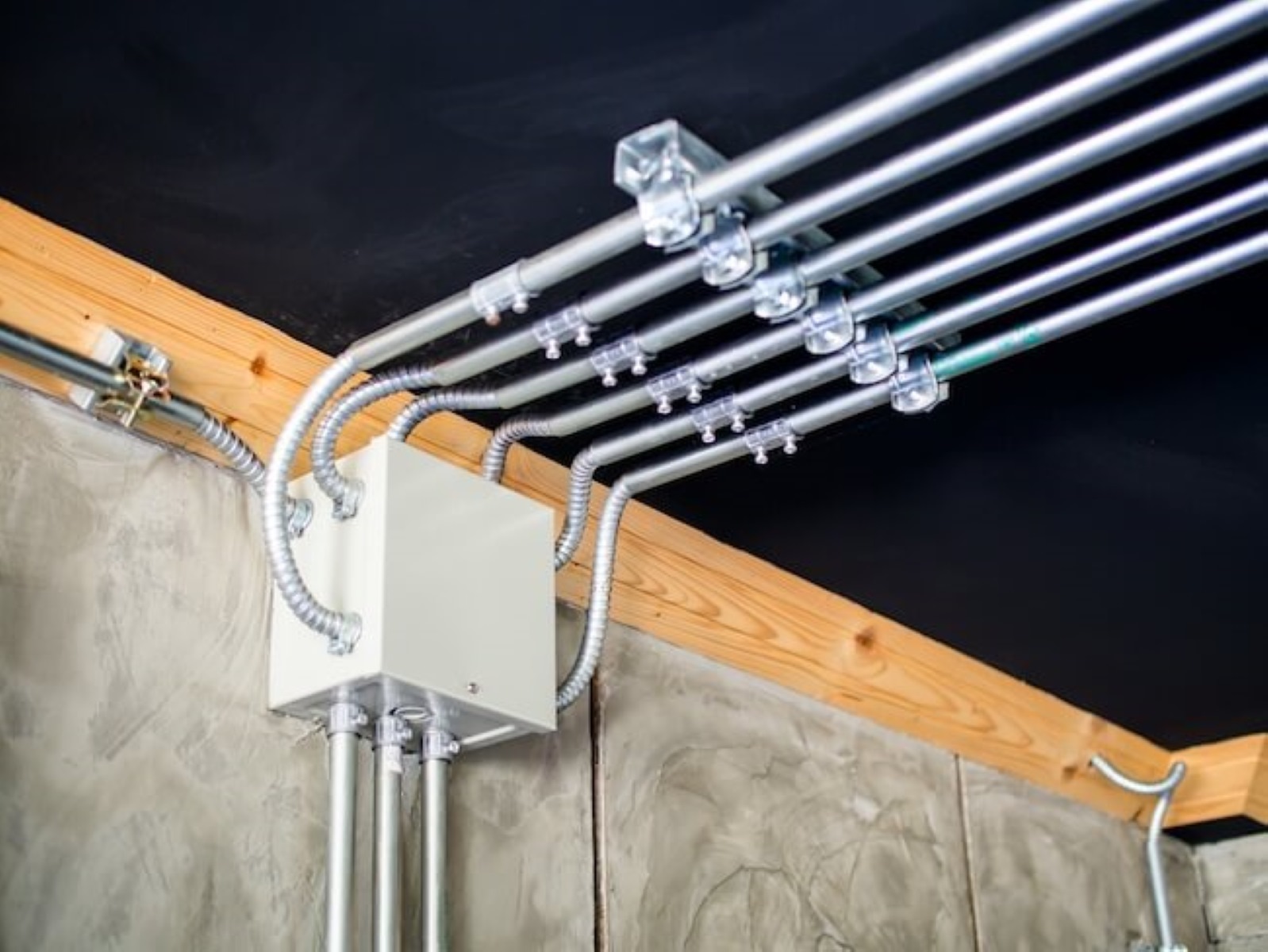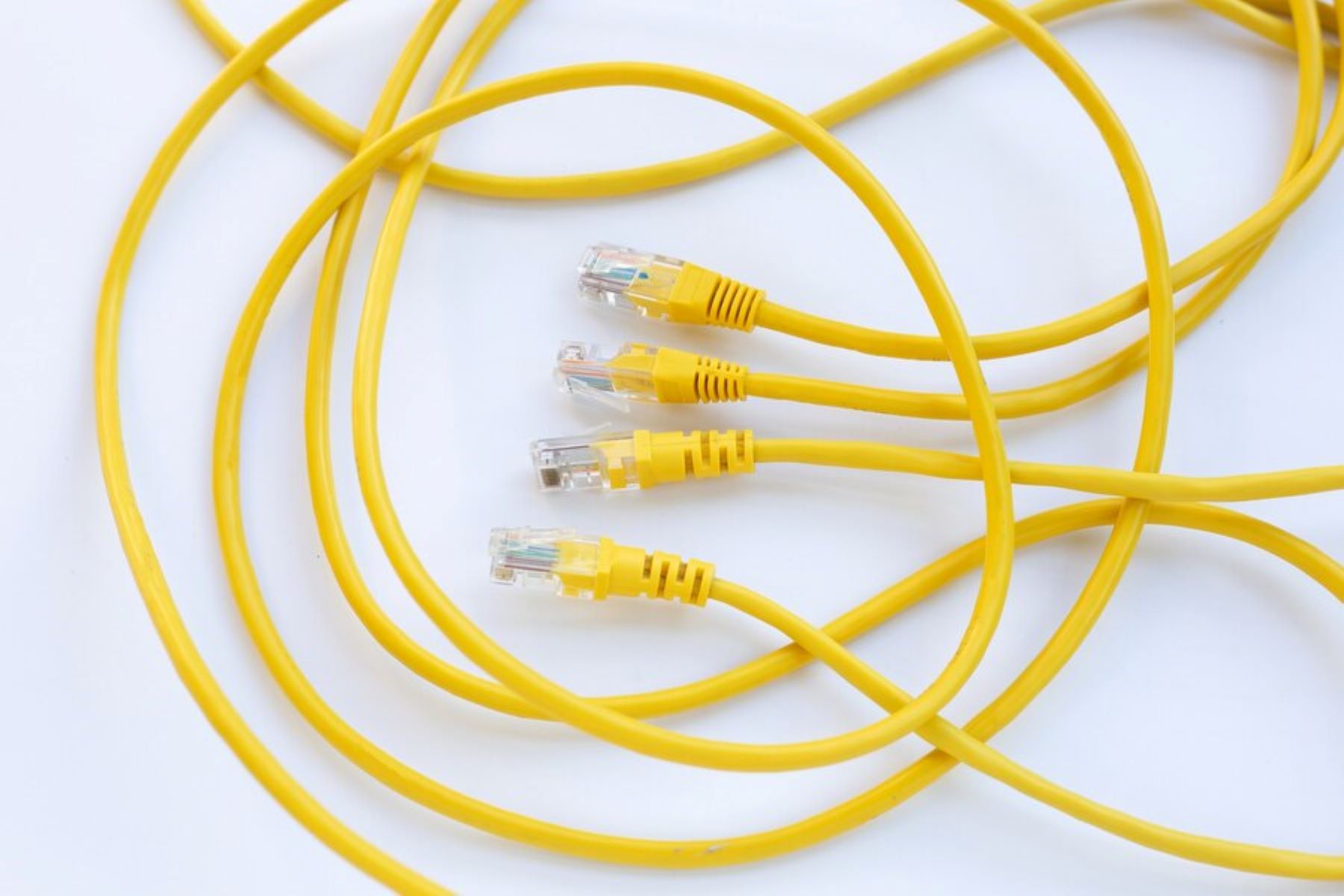Introduction
Welcome to the world of Ethernet standards! In this article, we will explore the fascinating realm of Thinnet Ethernet, its various features, advantages, and disadvantages. But before we dive into the specifics, let’s start with a brief introduction to Ethernet itself.
Ethernet is a widely used networking technology that allows the interconnection of devices in a local area network (LAN). It enables the seamless transmission of data packets between computers, servers, routers, and other network devices. Over the years, different Ethernet standards have emerged, each offering unique capabilities and specifications to meet the varying needs of network environments.
In this article, we will focus on one particular Ethernet standard: Thinnet Ethernet. Also known as 10BASE2, this standard has played a crucial role in the evolution of Ethernet technology. Its name, Thinnet, is derived from the physical cable used for the network, which is thinner compared to other Ethernet standards.
Thinnet Ethernet (10BASE2) gained popularity in the 1980s and 1990s and was widely used in small to medium-sized networks. It provided a cost-effective solution for implementing Ethernet in environments where cabling distance was a limitation. The cable used in Thinnet Ethernet is known as RG-58 coaxial cable, which is relatively easy to install and maintain.
Now that we have a basic understanding of Ethernet and Thinnet Ethernet, let’s dig deeper into the specifics of this particular Ethernet standard. We will explore its features, advantages, disadvantages, applications, and also compare it with other Ethernet standards to gain a comprehensive understanding of its place in the world of networking.
What is Thinnet Ethernet?
Thinnet Ethernet, also known as 10BASE2, is an Ethernet standard that was widely used in the 1980s and 1990s for local area networks (LANs). It is called “Thinnet” due to the physical cable it utilizes, which is thinner compared to other Ethernet standards. The cable used in Thinnet Ethernet is a coaxial cable known as RG-58.
The Thinnet Ethernet standard supports a maximum data transfer rate of 10 megabits per second (Mbps) and has a maximum cable length of approximately 185 meters. The cable is terminated using BNC (Bayonet Neill–Concelman) connectors, which provide a secure and reliable connection between network devices. Thinnet Ethernet uses a bus topology, where all devices are connected to a single cable in a daisy chain fashion.
In a Thinnet Ethernet network, each network device is connected to the main coaxial cable using a T-connector. The network devices communicate with each other by sending data packets onto the cable, which are then received and processed by the intended recipient. However, since the network operates on a shared medium, collisions can occur if multiple devices attempt to transmit data simultaneously. To mitigate collisions, Thinnet Ethernet employs a carrier-sense multiple access with collision detection (CSMA/CD) mechanism.
One of the key advantages of Thinnet Ethernet is its cost-effectiveness. The use of the thin coaxial cable made installation and maintenance relatively easy and affordable, especially in small to medium-sized networks. Additionally, the bus topology made it straightforward to add or remove network devices without disrupting the network as a whole.
However, Thinnet Ethernet also has its limitations. The maximum cable length of 185 meters restricted its use to smaller network deployments. Additionally, the shared-medium nature of Thinnet Ethernet meant that network performance could be affected by high network traffic and collisions. As Ethernet technology advanced, faster and more efficient Ethernet standards were developed, surpassing the capabilities of Thinnet Ethernet.
Despite its limitations, Thinnet Ethernet played an important role in the evolution of Ethernet technology. It offered an affordable solution for implementing local area networks and paved the way for advancements in networking. While Thinnet Ethernet is less common nowadays, it still holds historical significance and provides valuable insights into the early stages of Ethernet technology.
What is the Ethernet Standard Below Referred to as Thinnet?
The Ethernet standard below referred to as Thinnet is known as 10BASE2. The “10” in 10BASE2 represents the maximum data transfer rate of 10 megabits per second (Mbps), while “BASE” indicates baseband signaling. The “2” signifies a maximum segment length of 200 meters. Thinnet Ethernet was developed as an improvement over its predecessor, Thicknet Ethernet (10BASE5), which had a thicker, more rigid coaxial cable.
Thinnet Ethernet, also called Thin Ethernet or Cheapernet, gained popularity due to its affordable implementation and flexibility in small to medium-sized networks. It made use of RG-58 coaxial cable, which was significantly thinner and more flexible compared to the cable used in Thicknet Ethernet. The 10BASE2 standard utilized BNC (Bayonet Neill–Concelman) connectors for termination, ensuring a secure and reliable connection.
The distinguishing feature of Thinnet Ethernet is its bus topology, where all network devices are connected to a single cable. Each device is connected to the main cable using T-connectors, ensuring a continuous connection throughout the network. This topology made it relatively easy to add or remove devices without disrupting the overall network operation.
To enable communication within the network, Thinnet Ethernet utilized a collision detection mechanism called carrier-sense multiple access with collision detection (CSMA/CD). Each device on the network listened for any ongoing transmissions and waited for an idle channel before transmitting data. If collisions occurred, all devices involved detected the collision and waited for a random period before attempting to retransmit their data.
Thinnet Ethernet’s maximum cable length of approximately 185 meters imposed a limitation on the size of the network. However, it provided a cost-effective solution for smaller local area networks, such as those found in homes, small offices, and educational institutions.
While Thinnet Ethernet was widely used in the past, it has been largely replaced by newer and faster Ethernet standards, such as 100BASE-TX and 1000BASE-T. These standards offer greater bandwidth, longer cable lengths, and more advanced features, making them better suited for modern networking requirements. Nonetheless, Thinnet Ethernet remains an important milestone in the evolution of Ethernet technology, showcasing the early advancements and practicality of implementing local area networks.
Features of Thinnet Ethernet
Thinnet Ethernet, also known as 10BASE2, offered several key features that made it a popular choice for local area networks (LANs) in the past. Let’s explore some of the prominent features of Thinnet Ethernet:
1. Cable Type and Length: Thinnet Ethernet used RG-58 coaxial cable, which was thinner and more flexible compared to other Ethernet standards. The maximum cable length for Thinnet Ethernet was approximately 185 meters, allowing for network connectivity in smaller or medium-sized environments.
2. Bus Topology: Thinnet Ethernet utilized a bus topology, where all devices within the network were connected to a single cable. Each device connected to the main cable using T-connectors, creating a continuous connection throughout the network. This topology made it easy to add or remove devices without disrupting the entire network.
3. Data Transfer Rate: Thinnet Ethernet supported a maximum data transfer rate of 10 megabits per second (Mbps). While this may seem slower compared to modern Ethernet standards, it was sufficient for the networking needs of the time.
4. CSMA/CD Mechanism: To avoid collisions and ensure efficient data transmission, Thinnet Ethernet employed the carrier-sense multiple access with collision detection (CSMA/CD) mechanism. This mechanism allowed devices to detect if the network was idle before transmitting data and also facilitated collision detection and resolution.
5. Connectors: Thinnet Ethernet used BNC (Bayonet Neill–Concelman) connectors for terminating the coaxial cable. These connectors provided a secure and reliable connection between network devices, ensuring stable communication.
6. Cost-Effectiveness: One of the significant advantages of Thinnet Ethernet was its cost-effectiveness. The use of RG-58 coaxial cable made installation and maintenance relatively affordable, making it an attractive option for small to medium-sized networks.
7. Compatibility: Thinnet Ethernet was backward-compatible with Thicknet Ethernet (10BASE5) through the use of appropriate adapters. This allowed for easier migration from Thicknet to Thinnet Ethernet without the need for a complete cable replacement.
While Thinnet Ethernet provided a practical solution for network connectivity in its time, it has been surpassed by newer and faster Ethernet standards. However, it remains an important part of Ethernet’s history and serves as a foundation for the technologies we use today.
Advantages of Thinnet Ethernet
Thinnet Ethernet, also known as 10BASE2, offered several advantages that made it a popular choice for local area networks (LANs) in the past. Let’s explore some of the key advantages of Thinnet Ethernet:
1. Cost-Effectiveness: One of the main advantages of Thinnet Ethernet was its affordability. The use of RG-58 coaxial cable made installation and maintenance relatively inexpensive compared to other Ethernet standards. This made Thinnet Ethernet an attractive option for small to medium-sized networks with budget constraints.
2. Flexible Cable: Thinnet Ethernet utilized a thinner and more flexible coaxial cable compared to other Ethernet standards. This flexibility made it easier to route the cable through tight spaces and around obstacles, simplifying the installation process.
3. Easy Network Expansion: Thinnet Ethernet’s bus topology made it straightforward to add or remove devices from the network without disrupting the overall network operation. Devices could be easily connected to the main cable using T-connectors, allowing for hassle-free network expansion and modification.
4. Compatibility: Thinnet Ethernet was backward-compatible with Thicknet Ethernet (10BASE5) through the use of appropriate adapters. This offered a smooth migration path for networks that already had Thicknet Ethernet infrastructure in place, reducing the need for a complete cable replacement.
5. Reliable Connection: Thinnet Ethernet used BNC (Bayonet Neill–Concelman) connectors for terminating the coaxial cable. These connectors provided a secure and reliable connection between network devices, minimizing the chances of signal loss or disruption.
6. Collaborative Transmission: Thinnet Ethernet utilized the carrier-sense multiple access with collision detection (CSMA/CD) mechanism. This allowed devices to detect the network’s status before transmitting data, reducing the likelihood of collisions. In the event of a collision, CSMA/CD enabled devices to detect the collision and retransmit their data after a random interval, ensuring efficient data transmission.
7. Simplicity: Thinnet Ethernet had a relatively simple architecture, making it easy to understand and troubleshoot. This simplicity contributed to the ease of installation and maintenance, especially for users with limited technical expertise.
While Thinnet Ethernet had its advantages, it has been largely replaced by newer and faster Ethernet standards that offer higher data transfer rates, longer cable lengths, and more advanced features. Nonetheless, Thinnet Ethernet played a crucial role in the early stages of Ethernet technology and paved the way for further advancements in networking.
Disadvantages of Thinnet Ethernet
Despite its advantages, Thinnet Ethernet (10BASE2) also had several limitations and disadvantages that contributed to its decline in popularity. Let’s explore some of the notable drawbacks of Thinnet Ethernet:
1. Limited Cable Length: One of the main disadvantages of Thinnet Ethernet was its limited cable length. With a maximum cable length of approximately 185 meters, Thinnet Ethernet was suitable for smaller network deployments but posed challenges for larger networks that required extensive coverage. The limited cable length restricted the physical reach of the network.
2. Signal Degradation: Thinnet Ethernet’s signal quality could be affected by various factors, including cable length, environmental conditions, and signal interference. As the cable length increased, signal degradation increased, which could lead to lower network reliability and data transmission errors.
3. Shared Medium: Thinnet Ethernet operated on a shared medium, meaning all devices on the network shared the same cable for transmission. This shared-medium approach introduced the possibility of collisions when multiple devices attempted to transmit data simultaneously. Collisions could result in slower network performance and increased latency.
4. Difficult Troubleshooting: Identifying and resolving network issues in Thinnet Ethernet could be challenging. The shared-medium nature and the presence of multiple devices connected to the same cable made it more difficult to pinpoint the source of network problems. Locating a faulty connection or device required careful inspection and testing.
5. Difficulty in Expansion: While Thinnet Ethernet allowed for easy addition or removal of devices, network expansion beyond the cable’s length posed challenges. Extending the network beyond the maximum cable length required additional repeaters or the installation of multiple cable segments joined together, which increased complexity and cost.
6. Lower Data Transfer Rate: Compared to newer Ethernet standards, such as 100BASE-TX and 1000BASE-T, Thinnet Ethernet offered a lower maximum data transfer rate of 10 megabits per second (Mbps). This limited bandwidth hinders the ability to efficiently handle large file transfers and multimedia streaming, which are common requirements in modern networking environments.
7. Obsolete Technology: With the advancements in Ethernet technology and the development of faster and more efficient standards, Thinnet Ethernet has become outdated and less prevalent in today’s networks. As a result, finding compatible hardware and support for Thinnet Ethernet can be challenging.
Despite these disadvantages, Thinnet Ethernet played a significant role in the development and adoption of Ethernet technology. It represented an important milestone and laid the foundation for the future advancements that brought about faster data transfer rates, longer cable lengths, and more reliable networking solutions.
Applications of Thinnet Ethernet
Thinnet Ethernet, also known as 10BASE2, found widespread use in various applications during its prime. Although it has been largely replaced by newer Ethernet standards, it played an important role in the early stages of networking. Let’s explore some of the notable applications of Thinnet Ethernet:
1. Small Offices: Thinnet Ethernet was commonly employed in small office environments where cost-effectiveness and simplicity were prioritized. Its affordability and easy installation made it an attractive option for connecting computers, printers, and other office devices within a limited area.
2. Educational Institutions: Thinnet Ethernet was widely adopted in schools, colleges, and universities. It provided a cost-effective solution for building local area networks in educational environments with limited budgets. Thinnet Ethernet facilitated connectivity between computer labs, library systems, administrative offices, and other facilities present on campus.
3. Home Networks: Thinnet Ethernet was also employed in home networks, especially during the early stages of networking at home. It allowed for the connection of personal computers, printers, and other peripheral devices, enabling file sharing and internet access among family members.
4. Small Businesses: For small businesses with limited networking requirements, Thinnet Ethernet offered an economical means of establishing a basic network infrastructure. It provided connectivity for essential devices such as computers, network printers, and shared storage without the need for expensive installations.
5. Legacy System Support: In certain industries or organizations, older systems and equipment that relied on Thinnet Ethernet may still be in use. Retrofitting or upgrading entire systems can be costly, and the existing Thinnet Ethernet infrastructure may continue to be utilized to support these legacy systems.
6. Lab Environments: Thinnet Ethernet was commonly used in laboratory settings where a reliable and cost-effective interconnection of devices was required. Laboratories often have a large number of computers, instruments, and data collection devices that need to communicate with each other, and Thinnet Ethernet provided a simple and affordable solution.
7. Temporary Networks: Thinnet Ethernet was occasionally used in temporary networking setups for events, exhibitions, or conferences. Its easy installation, flexibility, and cost-effectiveness made it an attractive choice for such short-term networking requirements.
While Thinnet Ethernet may not be as widely used in these applications today, its historical significance cannot be overlooked. It paved the way for advancements in Ethernet technology and set the stage for faster transfer rates, increased cable lengths, and more robust networking solutions that we benefit from today.
Comparison with Other Ethernet Standards
Thinnet Ethernet (10BASE2) is an Ethernet standard that played a significant role in the evolution of networking technology. However, as technology advanced, new Ethernet standards emerged with improved features and capabilities. Let’s compare Thinnet Ethernet with some of the other Ethernet standards to understand their key differences:
1. Thicknet Ethernet: Thinnet Ethernet’s predecessor, Thicknet Ethernet (10BASE5), used a thicker and less flexible coaxial cable compared to Thinnet Ethernet. While Thinnet Ethernet offered a maximum cable length of approximately 185 meters, Thicknet Ethernet supported a longer cable length of around 500 meters. However, the thicker cable made installation more challenging and less cost-effective.
2. Twisted Pair Ethernet: Twisted Pair Ethernet, commonly known as 10BASE-T, utilized twisted pair cables for data transmission. In contrast to the coaxial cable used in Thinnet Ethernet, twisted pair cables offered greater flexibility, ease of installation, and increased resistance to signal interference. Twisted Pair Ethernet also supported higher data transfer rates, reaching up to 10 Mbps.
3. Fiber Optic Ethernet: Fiber Optic Ethernet, such as 100BASE-FX, employed fiber optic cables for data transmission instead of copper-based cables. Fiber optic cables offered significant advantages over the coaxial cables used in Thinnet Ethernet, including higher data transmission speed, longer cable length, and better resistance to electromagnetic interference. Fiber Optic Ethernet became the preferred choice for long-distance and high-speed data transmission.
4. Fast Ethernet: Fast Ethernet, represented by standards such as 100BASE-TX, provided a significant improvement in data transfer rates compared to Thinnet Ethernet. Fast Ethernet offered speeds of up to 100 Mbps, making it ten times faster than Thinnet Ethernet. This increased bandwidth was well-suited for handling larger file transfers, multimedia streaming, and more network-intensive applications.
5. Gigabit Ethernet: Gigabit Ethernet standards, such as 1000BASE-T, further enhanced network speeds by offering data transfer rates of up to 1 gigabit per second (Gbps). Gigabit Ethernet revolutionized networking capabilities by delivering higher bandwidth, improved network performance, and enhanced support for data-intensive applications.
While Thinnet Ethernet had its advantages, such as its cost-effectiveness and ease of installation, it was gradually replaced by newer Ethernet standards that offered faster data transfer rates, greater flexibility, and increased reliability. The evolution of Ethernet standards reflects the continuous drive towards faster and more efficient networking technologies to meet the growing demands of modern networks.
Conclusion
Thinnet Ethernet (10BASE2) served as an important Ethernet standard in the early days of networking and played a crucial role in the evolution of Ethernet technology. Its use of RG-58 coaxial cable and bus topology provided a cost-effective and flexible solution for smaller networks, such as those found in homes, small offices, and educational institutions.
Although Thinnet Ethernet offered advantages such as affordability, ease of installation, and compatibility with older systems, it had limitations and disadvantages. The limited cable length, potential for signal degradation, shared-medium operation, and lower data transfer rates were some of the drawbacks that contributed to its decline in popularity.
Over time, newer Ethernet standards emerged, offering faster data transfer rates, longer cable lengths, and improved network performance. Twisted Pair Ethernet, Fiber Optic Ethernet, Fast Ethernet, and Gigabit Ethernet surpassed Thinnet Ethernet in terms of speed, reliability, and scalability.
However, while Thinnet Ethernet may no longer be widely used today, its historical significance and contributions to the field of networking cannot be overlooked. It paved the way for advancements in networking technology, set the foundation for the development of faster Ethernet standards, and served as an affordable networking solution for small to medium-sized networks.
In conclusion, Thinnet Ethernet played a vital role in the early stages of Ethernet technology, offering a cost-effective and practical solution for networking. Its legacy lives on in the form of enhanced Ethernet standards that continue to shape our interconnected world today.

























